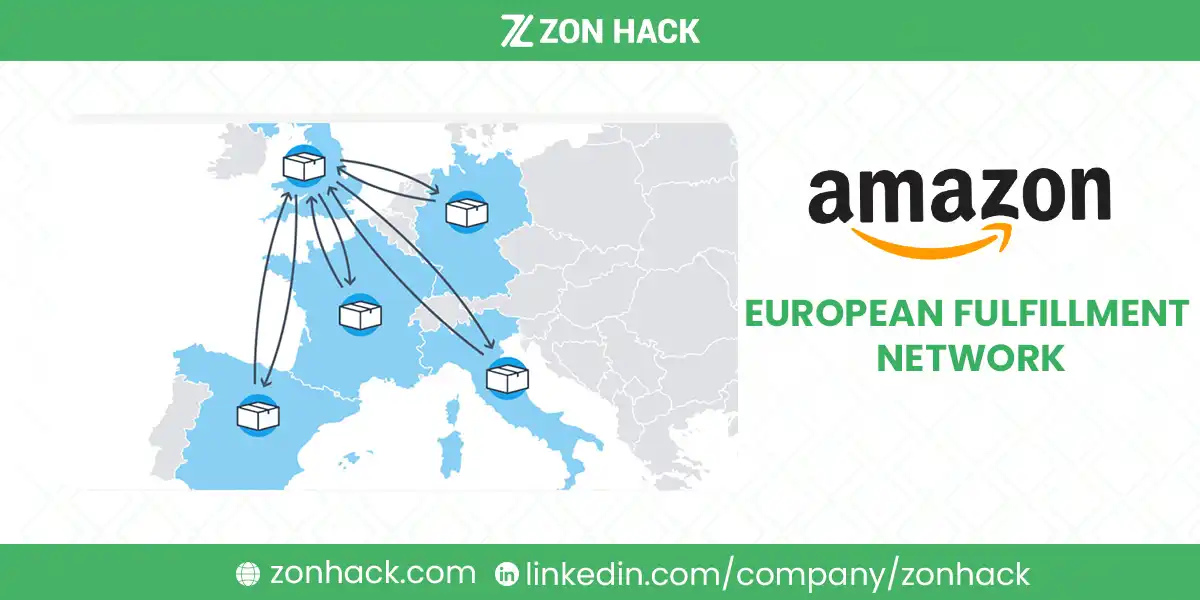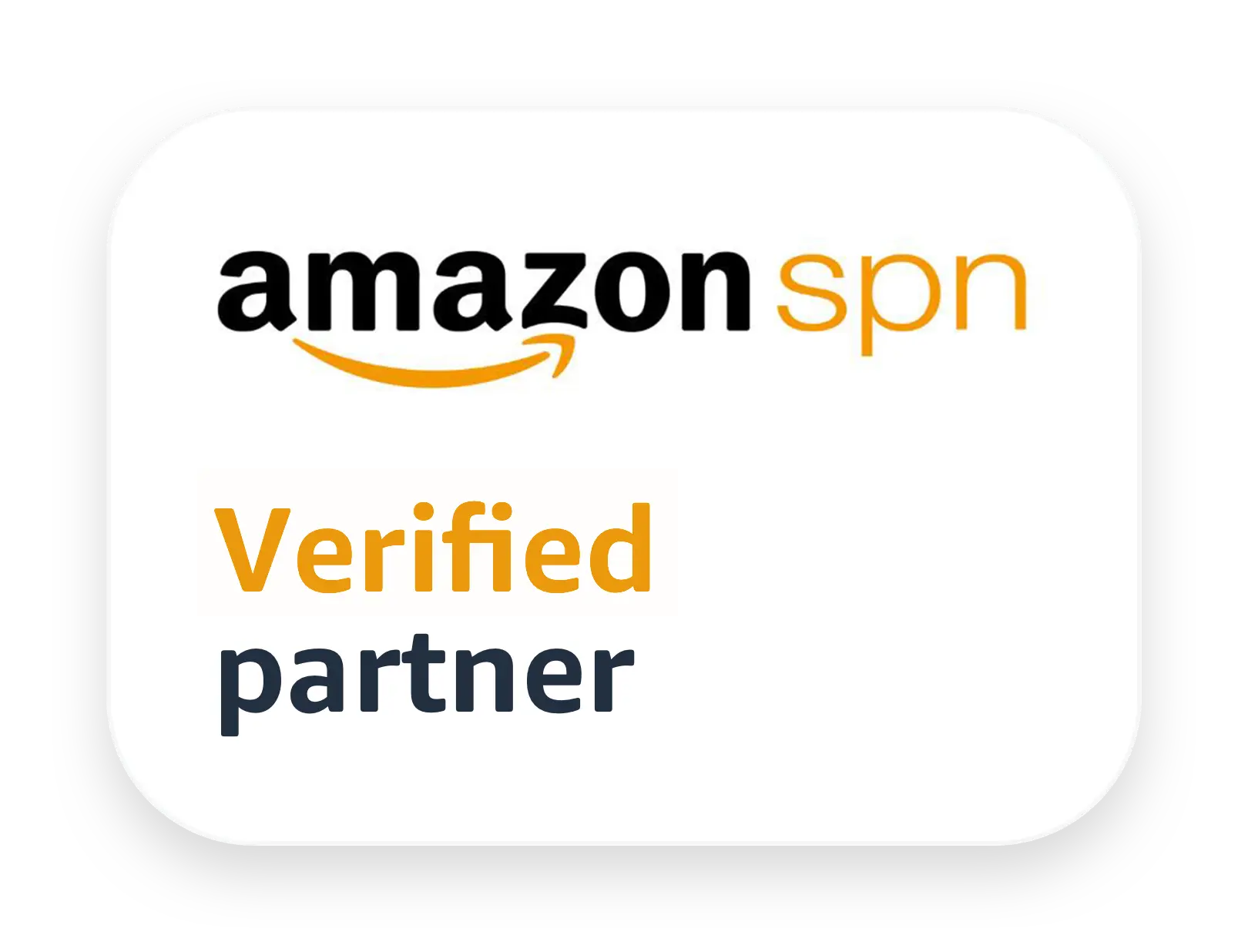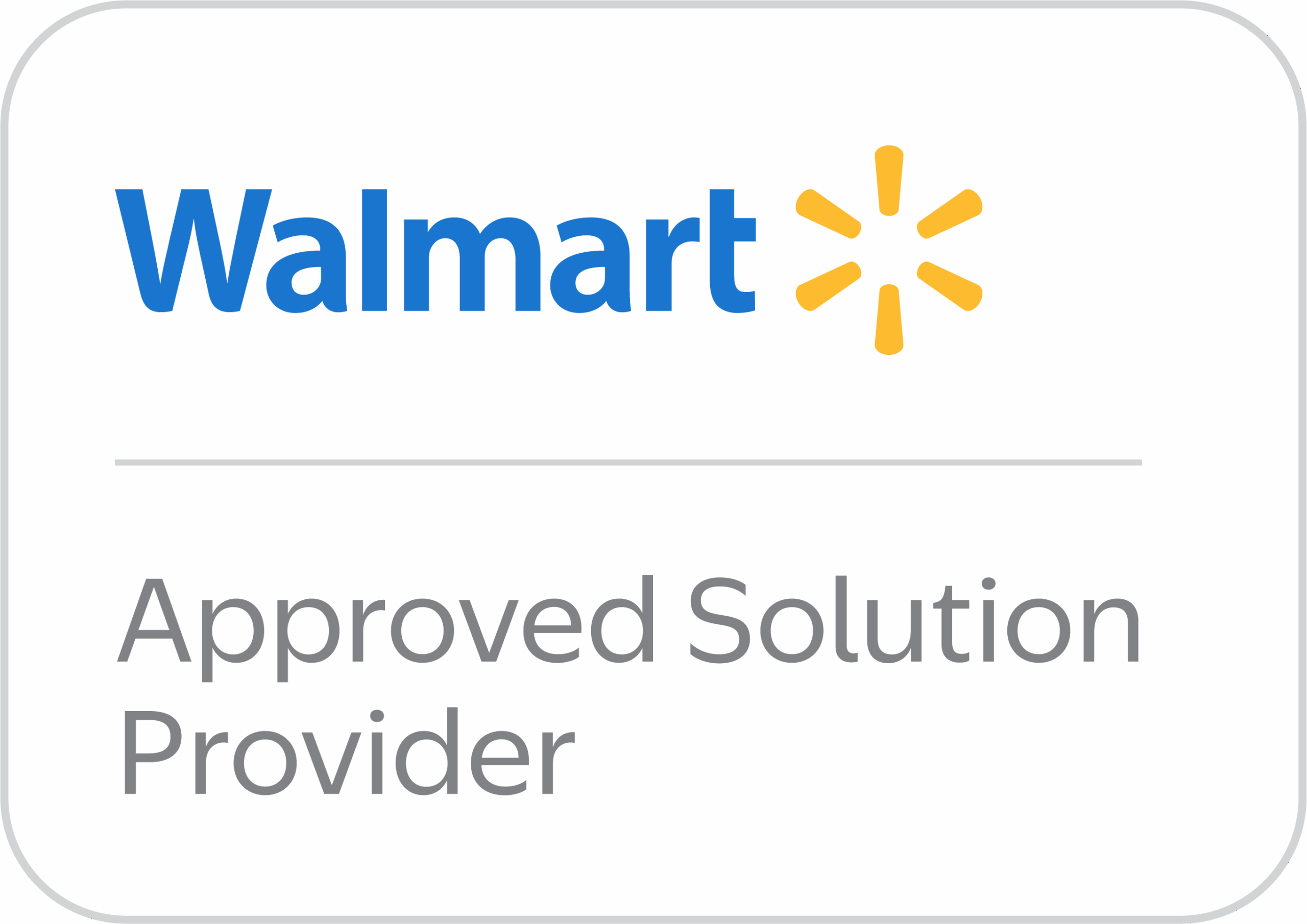Amazon European Fulfillment Network (EFN) is a service that empowers sellers to expand into European markets efficiently, fulfilling orders across multiple countries from a single inventory hub. By storing products in one Amazon fulfillment center within Europe, sellers can deliver to customers in other European countries, gaining access to millions of new buyers. This network simplifies logistics, allows Prime eligibility across marketplaces, and minimizes VAT registration burdens.
This article covers everything you need to know about EFN, from how it works, its benefits, costs, and compliance considerations, to practical strategies and real-world examples.
How Does Amazon’s European Fulfillment Network Work?
Amazon EFN offers a simple way to manage cross-border sales across Europe by consolidating inventory in one Amazon fulfillment center. Once a seller’s inventory is in the designated EFN location, Amazon takes over the process of picking, packing, and shipping items to customers in other European countries. The process is straightforward:
- Inventory Storage: Sellers send their products to a single Amazon fulfillment center in Europe.
- Order Fulfillment Across Europe: When an order is placed, Amazon fulfills it from this center, reaching customers in various European nations.
- Prime Eligibility: All products stored under EFN automatically become eligible for Prime delivery across Amazon’s European marketplaces, a big selling point for buyers.
This setup means sellers can access multiple markets with a single account and one VAT registration—simplifying operations while keeping compliance manageable.
What Are the Benefits of Using Amazon EFN?
Amazon EFN offers several advantages for sellers looking to tap into the European market without setting up multiple warehouses. Here’s what makes EFN a popular choice:
Streamlined Fulfillment Process
The EFN structure is easy for sellers to manage. With just one fulfillment center, there’s no need to ship inventory to multiple locations, significantly reducing logistical complexity and associated costs.
Expanded Market Reach
With EFN, sellers can access customers across the UK, Germany, France, Italy, and other European markets from a single inventory pool, enabling market expansion without the need for multiple distribution centers.
Simplified VAT Compliance
Using EFN requires VAT registration only in the country where inventory is stored, typically the primary warehouse location. This is a considerable advantage for sellers who want to avoid the hassle of multi-country VAT registrations.
Prime Eligibility Across Europe
Prime is a powerful selling feature, as buyers prefer products eligible for Amazon Prime due to faster shipping and reliability. Products stored under EFN qualify for Prime delivery across Amazon’s European marketplaces, increasing product visibility and potentially boosting sales.
Cost-Effective for Small and Medium Businesses (SMEs)
For SMEs, EFN offers a low-barrier entry to international markets without the overhead costs of managing multiple European locations. Amazon handles the cross-border shipping and compliance requirements, allowing smaller businesses to focus on growth.
Drawbacks of Amazon EFN
While EFN has clear advantages, there are a few downsides to consider:
Higher Fulfillment Fees
The cost structure of EFN often results in higher cross-border fulfillment fees compared to Amazon’s Pan-European FBA (Pan-EU) program, especially for orders outside the primary storage country. For some sellers, these fees may impact profit margins, making Pan-EU a more attractive option for cost efficiency.
Longer Delivery Times for Some Markets
Since inventory is stored in one central warehouse, delivery times may be slower to countries farther away from that location. For customers used to rapid deliveries, especially in major cities, EFN may not meet their expectations as reliably as Amazon’s local fulfillment options.
Limited Compliance Coverage
Sellers using EFN must still navigate VAT registration and compliance requirements in the designated warehouse country. While simpler than other programs, EFN’s centralized structure doesn’t entirely eliminate regulatory requirements, and it may not suit businesses requiring more localized fulfillment options.
How is EFN Compared to Other Amazon Fulfillment Programs
Amazon offers various fulfillment options for European sellers. Each option has unique features and benefits, depending on the seller’s needs and customer base.
Amazon EFN vs. Pan-European FBA (Pan-EU)
Pan-EU distributes inventory to multiple Amazon fulfillment centers across Europe. It enables faster delivery by storing products closer to buyers but requires VAT registration in each country where inventory is held. Pan-EU is often better for sellers with high-demand products across Europe who want fast delivery but can manage the VAT complexities.
Amazon EFN vs. Multi-Country Inventory (MCI)
MCI allows sellers to choose specific countries where they want to store inventory, providing a middle ground between EFN and Pan-EU. MCI offers faster delivery and Prime eligibility but requires multiple storage locations and VAT registrations for each country, increasing compliance obligations.
Amazon EFN vs. Central Europe Program (CE)
The CE program is aimed at German-based sellers, offering distribution across Germany, Poland, and the Czech Republic. It’s VAT-compliant within the Central European region and provides a cost-effective solution for sellers looking to focus on this area without incurring broader cross-border fees.
Amazon EFN vs. Remote Fulfillment
Remote Fulfillment allows sellers to store products in one country, typically the UK, and fulfill orders to EU customers from there. This setup is beneficial for post-Brexit sellers who want simplified VAT management but don’t mind longer delivery times.
Amazon EFN vs. Dual Inbounding
Dual inbounding means sending inventory to both UK and EU fulfillment centers, enabling quicker delivery but requiring VAT registration in both regions. It’s suited to sellers with significant customer bases in both the UK and the EU.
EFN vs. Third-Party Fulfillment Solutions (3PLs)
For sellers seeking more control or unique services, third-party logistics providers (3PLs) in Europe can offer tailored solutions. While EFN is Amazon-managed, 3PLs allow more customization, especially for niche products. Although typically more expensive, 3PLs may provide shorter delivery times to specific regions, making them an option for sellers needing tailored logistics support.
EFN Fees: A Detailed Breakdown
EFN’s fee structure includes various charges that sellers should factor into their cost analysis. Here’s a breakdown:
| Fee Type | Cost (per unit) | Description |
| Fulfillment Fees | Varies by weight and dimensions | Based on size and shipping destination |
| Cross-Border Fees | 0.15 – 1.35 EUR per item | Additional charges for cross-border shipments |
| Storage Fees | 26-36 EUR per cubic meter | Monthly fee, based on storage duration and space used |
Fulfillment Fees vary significantly based on the item’s weight and dimensions, with higher costs for large or heavy items. Cross-border fees are added for shipments to countries outside the primary storage location, so sellers may find this challenging for heavier products. Lastly, storage fees cover inventory holding costs in the designated fulfillment center.
Compliance Requirements for Using Amazon EFN
EFN’s structure simplifies VAT compliance, as sellers generally need VAT registration only in the country where they store inventory. But VAT isn’t the only regulation. Sellers must also comply with Extended Producer Responsibility (EPR) requirements, which mandate waste reduction and recycling for specific product categories.
After Brexit, UK-based sellers fulfilling EU orders through EFN may face additional requirements. Amazon offers detailed guides on VAT and EPR compliance on Seller Central, and sellers are encouraged to consult local tax authorities for specific advice.
Impact of Brexit on Amazon EFN
Since Brexit, UK sellers face additional hurdles for EU fulfillment. Cross-border shipping between the UK and EU now involves customs fees and VAT implications, making EFN a more complex choice. However, some UK-based sellers have navigated this by using dual inbounding or Remote Fulfillment, avoiding complex VAT setups while still serving EU markets.
Wrap-Up
Amazon’s European Fulfillment Network (EFN) offers a streamlined way for sellers to reach European customers with a single inventory hub, enjoying benefits like Prime eligibility and simplified VAT registration. However, it comes with higher fees and potentially slower delivery times in some regions. To make the most of EFN, sellers should carefully consider costs, delivery speed, and compliance needs. With the right strategies, EFN provides an effective entry point into the European market, especially for small to medium-sized businesses looking to expand internationally.




